You’ve probably seen those news stories: “Search and Rescue finds Unprepared Hikers Lost/Injured in the Woods”. But that’s never going to be you right? Yup, we all think it won’t happen to us.
But it definitely could. No one expects to get lost, get stuck hiking in the dark or hurt themselves, but they do. (It even happens to super-prepared people.) So what can you do?
Thankfully, it’s fairly simple: you can bring a few pieces of gear that will help you survive if you get into trouble. Most of these items are ones you are likely carrying anyway, and they all fit into a small day pack.
This list of crucial gear is often called The 10 Essentials since there are ten items – or at least 10 categories of gear. (More on that later.)
In this post I’ve got a quick overview of the 10 essentials… plus one more thing that I think is definitely required (my 11th essential). I’ve also included a complete list of the ultralight and compact gear I carry as part of my 10 essentials.
Hey there: Some of the links in this post are affiliate links, which means I earn a small commission at no extra cost to you if you make a purchase. Thanks for your support! -Taryn
What are the 10 Essentials?
The 10 essentials are a list of important gear for emergency situations. The list comes from the 1974 edition of the classic (and still best) outdoor how-to manual: Mountaineering: The Freedom of the Hills. While it is designed for mountaineers, it’s still a helpful resource for hikers – I refer to mine every once in awhile to refresh.
The list of essentials started out as simple gear list, but over time it has evolved into a set of systems that encompass types of gear. For example it used to break out map and compass separately, but now they are grouped together as navigation.
While the original 10 essentials list is still the most common (and the one I use) you can also find other lists of essentials from groups like Scouts or hiking clubs. And as you’ll see, my list actually includes 11 items since I think that including a communication device is really important.
Leave a Trip Plan
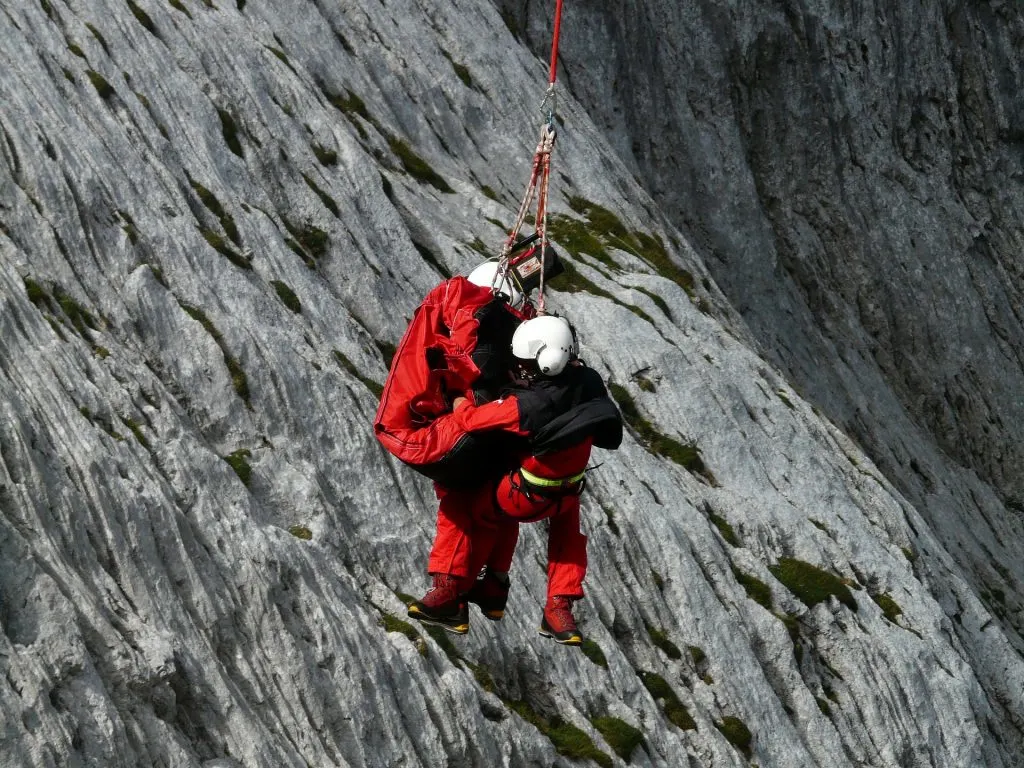
The 10 essentials should come with you on every trip, but that shouldn’t be the only pre-hike preparation you do. One of the most important safety measures you can take when hiking is to leave a trip plan with a friend or family member. That way if you get lost or injured, search and rescue knows where to look for you.
Adventure Smart has a great online trip planning template you can use. Planning ahead and preparing is one of the seven principles of Leave No Trace, so it’s an important way to ensure we keep the wilderness wild.
Check out my full checklist of things to do before every hike.
The 10 Essentials
1. Navigation
A trail description from a guide book or website is great, but that won’t help you when you take a wrong turn, lose the trail or get lost in a maze of unmarked junctions.
I’m old school, so I always carry a paper map. If possible, I like to carry a trail map that shows all of the trails in the area. That way I can adjust my route on the fly if I need to. Government issue topographic maps are great, but they don’t always have all the trails.
Although I rarely use it, I also have a compass stashed in my pack. Get some practice using it and make sure you adjust the declination.
If you want to learn how to navigate with a map and compass (or if you have no idea what I meant by declination in that last sentence), consider taking a course. I also find this book about Wilderness Navigation really helpful for learning map and compass navigation.
I used to use a handheld Garmin eTrex stand-alone GPS unit for navigation. However, these days I use the Gaia GPS app on my phone for navigation. It does everything the old stand-alone units did and is easier to use.
The only thing to keep in mind with using your phone for navigation is battery life. Carry an external battery (I like the Anker ones), shut down any apps you aren’t using, turn down screen brightness and put your phone in airplane mode to save as much battery life as possible.
2. Sun Protection

Getting a sunburn can be really debilitating. The sun is harsher in the mountains, especially when you add in the reflection off snow.
The original 1974 list of the 10 essentials included an entry for sunscreen and sunglasses, but the modern version groups those together along with things like long sleeves and hats to form the sun protection system.
That makes a lot of sense to me because in the last few years I’ve stopped wearing as much sunscreen and switched to sun hoodies instead. I sweat a lot so I find it a challenge to keep reapplying sunscreen. When I wear a sun hoodie, I just have to reapply to my face and hands.
I keep a small stick of Sun Bum sunscreen in my pack. It comes in a stick form that you can just rub directly on your face so your hands don’t get greasy.
I have really sun sensitive eyes so I wear sunglasses on every hike. Polarized lenses are awesome, since they produce colours that are truer to nature and they work much better at cutting glare on water. I wear Goodr sunglasses since they are a great price for polarized sunglasses and don’t slip down my nose. (Also – fun colours!)
I also wear a baseball cap with my sun hoodie to shade my face. My favourite baseball cap is the Ciele GoCap. It’s designed for trail runners so it doesn’t absorb sweat and dries quickly. It’s also super light.
Before I switched to sun hoodies I sometimes wore the Sunday Afternoons Ultra-Adventure sun hat to shade my face and neck. It has a wide brim in the front and neck flap in in the back, which I love since hats with a wide brim all the way around bump into the top of my multi-day pack.
3. Insulation (Extra Clothing)

Even if the sun is shining in the city, it’s often cold and rainy (or even snowy) on the trail. I won’t go on a hike without a lightweight rain jacket in my pack, just in case. I often stuff my Mountain Hardwear Minimizer Rain Jacket into the corner of my pack. It’s Gore-Tex Paclite but it folds down to the size of a big orange.
If the forecast calls for cold or wet weather, I might also bring a pair of waterproof breathable rain pants. I also bring a layer like a fleece jacket or thermal shirt for extra warmth.
Since they are the farthest from your heart, your extremities (that’s your hands, feet and head) will usually get cold first. I always have a warm hat or a wool buff in my pack. I pack a pair of lightweight fleece gloves too.
A spare pair of socks is also awesome. You can change your socks if they get wet from rain or sweat, which helps to prevent blisters. Plus they double as mittens in an emergency.
4. Illumination (Headlamp or Flashlight)
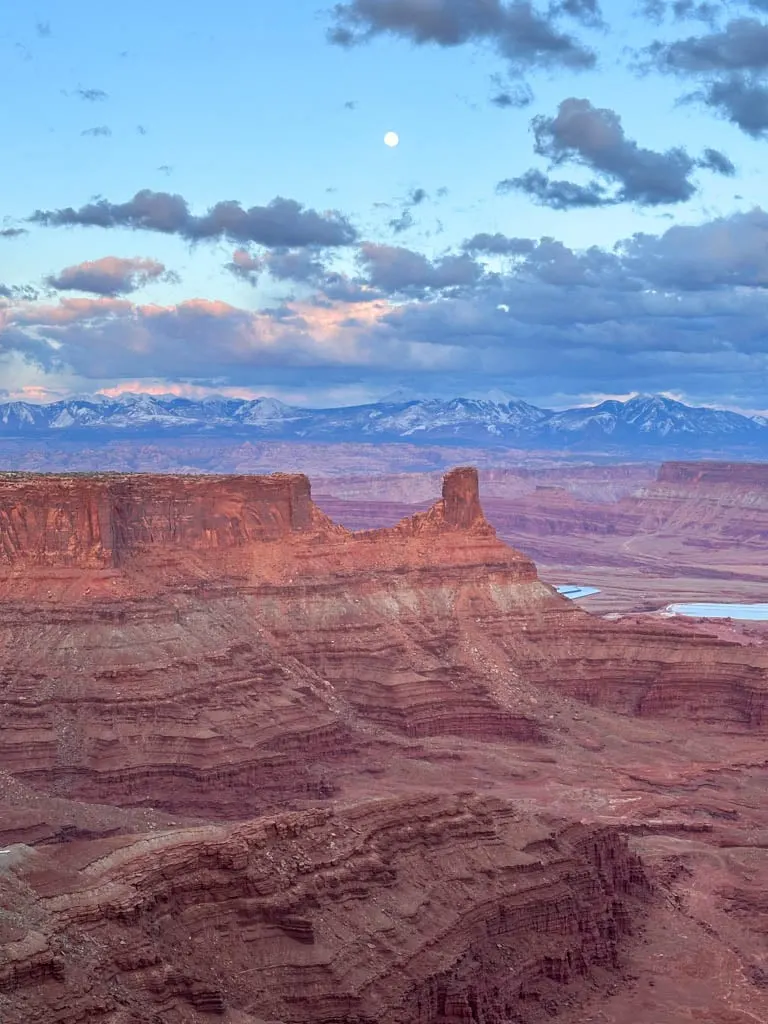
One of the easiest ways to get lost or injured is to end up hiking after dark. Most of us don’t mean to finish the trail in the dark, but stuff happens. You hike slower than you thought, the trail is harder than your thought, or you just spent waaaay too much time at the summit admiring the view.
Pack a headlamp or flashlight (also known as torch if you’re British) just-in-case situations I carry the Petzl Bindi because it’s so tiny. But it isn’t that bright so winter trips or time where I know I’ll be out later, I use the Fenix HM50R, which is still quite compact but is really bright.
Don’t rely on your phone for light. Using your phone as a flashlight drains your battery really quickly which can leave you without a light AND without a way to call for help.
Make sure you pack spare batteries for your light too. Both of my headlamps are USB rechargable so I don’t have to worry about carrying AAs. Instead I just carry an Anker power bank to act as a spare battery for my headlamp, phone, any other USB rechargeable devices I am carrying. Just make sure you remember to pack the right cables!
5. First-Aid Supplies
You never plan for things to go wrong. But they do. I always carry a small first aid kit on every hike. I have a lightweight kit from Adventure Medical Kits that comes with the basics. But you can always put together a kit yourself at the drug store.
Whichever route you choose, make sure you know what’s in your kit and how to use it. And ensure the kit includes everything you think you’ll need, including pain killers and other medications that sometimes aren’t included.
I always keep my kit in a waterproof bag so it can’t get wrecked. (A cheap Ziploc freezer bag works great.) If you use up some first aid supplies, remember to replace them before your next trip.
The contents of each person’s preferred first aid kit varies. The most common injuries for hikers are small cuts, blisters, and muscle pain, so make sure you have supplies to deal with those issues.
My kit contains bandaids and adhesive bandages in a few different sizes, medical tape, ibuprofen, antihistamines, antiseptic wipes, moleskin, blister dressings and some safety pins.
6. Fire
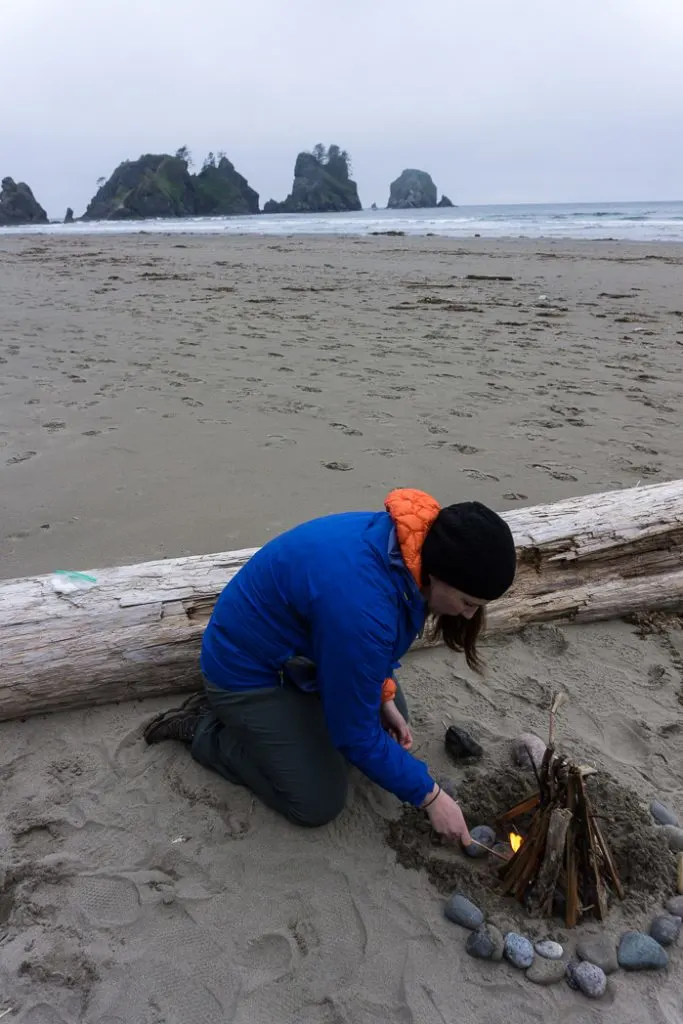
In an emergency, the ability to start a fire could be the difference between life and death. The warmth of a fire can save you from hypothermia and the smoke can be used to signal for help.
I always carry a simple Bic lighter or some stormproof matches in my bag. But it wasn’t until I took a wilderness survival course that I realized how difficult it is to start a fire in the woods. Most things are pretty wet and don’t burn well!
There are lots of commercial fire starters on the market, but one of the key things I learned in my course was how to make my own. They are super easy to make and cheap too: just cotton balls with some vaseline rubbed into them. I store them in a tiny Ziploc bag.
7. Repair Kit and Tools
In an emergency, you need something to cut with. That might be cutting twigs for kindling to start your fire, cutting a branch to act as a splint, cutting up bandages, or maybe just opening a stubborn package of trail mix.
I carry a small multi-tool that includes pliers and scissors as well as a small knife. Mine is the Leatherman Squirt, which is discontinued, but the Gerber Dime is similar.
I also carry other repair supplies to fix broken gear including as Gear Aid Tenacious Tape (better than duct tape), zip ties, and a tent pole repair splint.
8. Nutrition (Extra Food)
Hiking is hard work, so you probably bring some water and snacks or a lunch on most hikes, right? But it’s also a good idea to bring a little bit extra in case you are out longer than you planned. Or in case things go really wrong and you need to spend a the night while waiting for help.
In addition to lunch, I always have a couple extra energy bars or gels stashed in my pack. These days Gu energy chews are my favourite. They taste and look like gummy candy, but have the same electrolytes and carbs as energy gels.
Remember to check the expiry dates on snacks that have been in your bag for awhile so they don’t go bad on you.
9. Hydration (Extra Water)
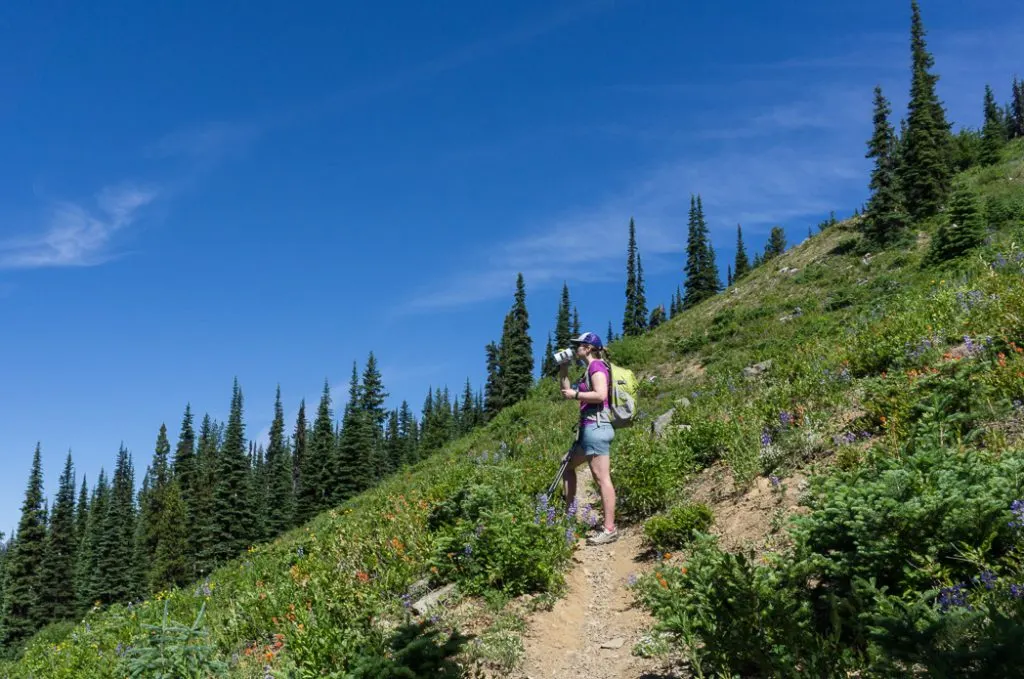
I bring a reusable water bottle or hydration pack on every hike. I also carry a few water purification tablets with my emergency supplies. That way if I run out of water, I can treat stream water that I find along the way.
On longer hikes in hot weather I carry my Katadyn BeFree filter. It’s lightweight and compact. And the filter bag gives me an extra litre of water carrying capacity. Before my hike, I check maps and trail reports to make sure I can fill up on water along the way.
10. Emergency Shelter
If you get lost or injured (or your hiking partner gets hurt), you might need to spend the night on the trail waiting for help. A simple and lightweight emergency shelter can make all the difference.
The easiest form of shelter you can carry is a really big garbage bag. You can cut a hole in it and wear it as a jacket. And if you bring a bright orange garbage bag, you can use it to signal for help too.
Mylar space blankets are also a good option. They are very light, compact and inexpensive. But they are also really flimsy.
I carry a more durable (but still really light) SOL emergency blanket that comes in a waterproof pouch and has survival instructions printed right on the blanket. SOL also makes an emergency bivy bag (basically a mylar sleeping bag).
I also carry a short length of cord (actually a tent guyline) to help with shelter construction in an emergency. I can use the cord to rig up a tarp shelter with the emergency blanket.
11. Communication
It kind of bugs me that communication is not one of the 10 essentials. It’s important to be able to call for help in an emergency.
You are probably already carrying a cell phone, so you can definitely use that to call for help (if you have enough battery left – bring a power bank!) However, there is no cell reception on many hikes, especially in valleys or dense forest. (While newer iPhones have satellite messaging included, most people are still hiking with older phones without this technology.)
You should make sure you have a second method of communication as well.
I attach a small and loud whistle to the shoulder strap of every backpack I own. The sound of a whistle carries much better than the human voice, and you can keep blowing a whistle much longer than you can keep yelling. I use the Fox 40 whistle which is loud and has no moving parts that can break.
If you have the budget, consider investing in a satellite messenger device like the Garmin inReach Mini2. Since I often hike solo or in remote areas, having a device like this gives me and my family a lot of peace of mind.
The InReach lets you push a button in an emergency to summon first responders. Or you can send messages to friends or family, just to let them know you’ll be late. It’s not cheap and requires an annual subscription, but I think it’s worth it.
My Lightweight and Compact 10 Essentials Kit
Carrying the 10 essentials doesn’t have to be bulky, heavy or difficult. I carry most of my essentials in a single Ziploc freezer bag that I keep in my hiking day pack so I’m always ready to go. It takes up a small corner of my pack and I don’t even notice it’s there until I need something out of it.
Over the years I’ve refined the gear I use as part of my 10 essentials to make them lighter and smaller, but you can cobble together a 10 essentials kit with budget items and things you probably already own.
Here’s my complete 10 essentials kit:
- Navigation: Paper trail maps, Suunto compass, Gaia GPS app, and Anker power bank
- Sun Protection: Sun Bum sunscreen, Goodr sunglasses, Ciele GoCap, and a sun hoodie
- Insulation: Mountain Hardwear Minimizer Jacket, MEC Hydrofoil Stretch Rain Pants, fleece jacket, Merino Wool Buff, thin fleece gloves, merino wool socks
- Illumination: Petzl Bindi with Anker power bank
- First Aid Kit: Adventure Medical Kits ultralight first aid kit with bandaids and adhesive bandages in a few different sizes, medical tape, ibuprofen, antihistamines, antiseptic wipes, moleskin or other blister dressings and some safety pins.
- Fire Starter: stormproof matches, plus vaseline soaked cotton balls
- Repair and tools: Multi-tool with scissors, Gear Aid Tenacious Tape, zip ties, and a tent pole repair splint.
- Nutrition: Gu energy chews
- Hydration: hydration bladder, water purification tablets and Katadyn BeFree filter
- Emergency Shelter: SOL emergency blanket
- Communication: Fox 40 whistle, cell phone, Garmin inReach mini2
Final Thoughts
I keep my essentials together in a small stuff sack or a ziploc bag so they are easy to transfer from one backpack to another. That way I don’t end up out on the trail without the gear I need in an emergency.
What’s in your kit? Do you always carry the 10 essentials? Tell me in the comments.
READ NEXT:
- 16 Things to do Before a Hike
- Backpacking for Beginners: Tips for Getting Started
- How to Leave No Trace (And Why it’s Important!)
- Bear Safety for Hikers, Campers and Backpackers
- How to Find Trail Conditions
- Backpacking Checklist: Gear You Need To Go Backpacking
- Snow-Free Hikes in Vancouver: 50+ Year-round Trails - December 4, 2025
- 2025 Altitude Sports Black Friday Sale: My Picks for the Best Deals - November 25, 2025
- Bowron Lakes Canoe Circuit: 2026 Paddling Guide - November 20, 2025

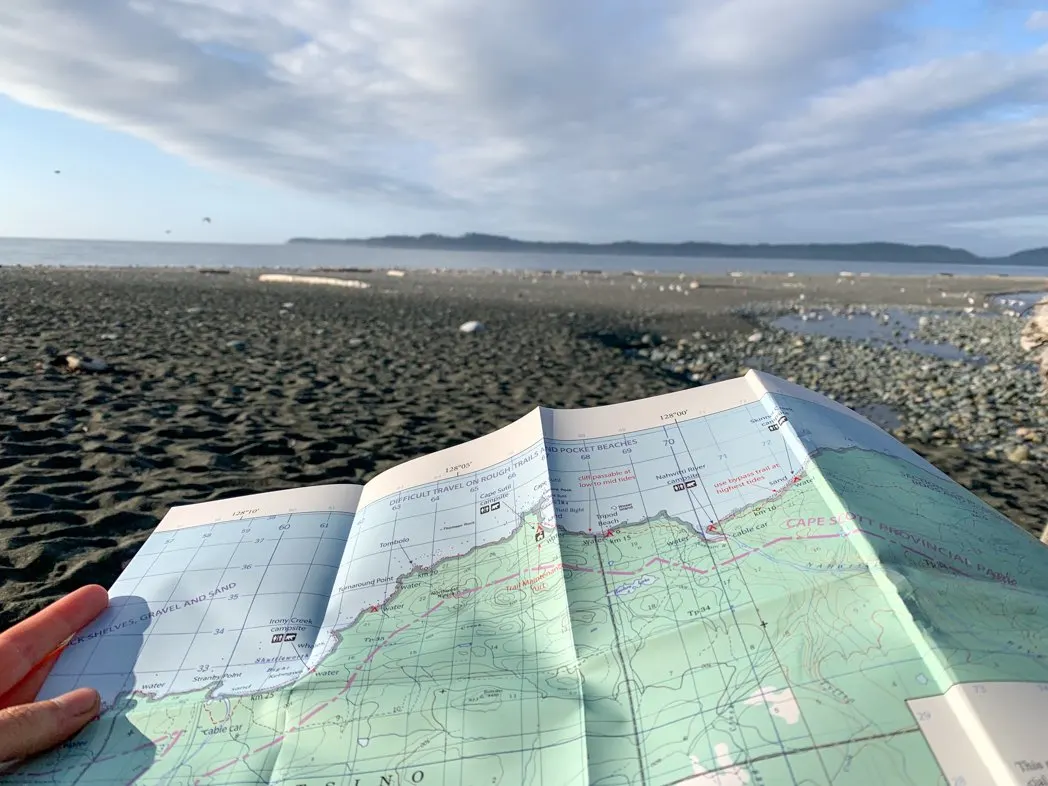
Remy
Friday 8th of August 2025
Great tips! Thanks so much for sharing. Question about the maps though, as I'm old school as well and I love and prefer paper maps over other methods. But where do you get your paper maps? I'm finding it harder and harder to locate paper maps (irony?) Is there a website you can order from? Any tips in this department would be greatly appreciated. Thanks so much!
Taryn Eyton
Friday 8th of August 2025
Many outdoor stores still carry paper maps. The US and Canadian governments both have sites where you can download and print your own topographic maps as well.
Denise Moedt
Thursday 3rd of October 2024
Thanks for the great list Taryn! I was wondering, do you carry the tent pole splint even on day hikes when you are not carrying your tent? I have usually kept my splint with my tent, but I’m wondering if I should rethink that.
Taryn Eyton
Thursday 3rd of October 2024
Good point - I don't carry the tent pole splint on day hikes :)
Sean
Thursday 1st of June 2023
Great information about the 10 essentials Taryn. The links for the hydration products, other than the tablets, all go to MEC but the products are no longer available there. Maybe the link should be removed. Regards, Sean
Taryn Eyton
Thursday 1st of June 2023
Glad you found the article helpful Sean. It's an older one so it looks like it's time to give it a bit of a touch up - broken links are my nemesis!
Nathan
Friday 29th of July 2022
What do you think of adding some cord to your pack? It could be used to support the tarp if you made an emergency shelter.
Taryn Eyton
Monday 8th of August 2022
I do actually carry a short length of cord in my day pack - but I guess I forgot to include that detail in the post. Great catch! I'll edit the post to include it.
Karen Margolese
Friday 28th of June 2019
This is a great site with some Amazing tips. Do you hike most of these trails alone?
Taryn Eyton
Saturday 29th of June 2019
Hi Karen, I do hike alone sometimes, but most of the time I hike with my husband or a friend.